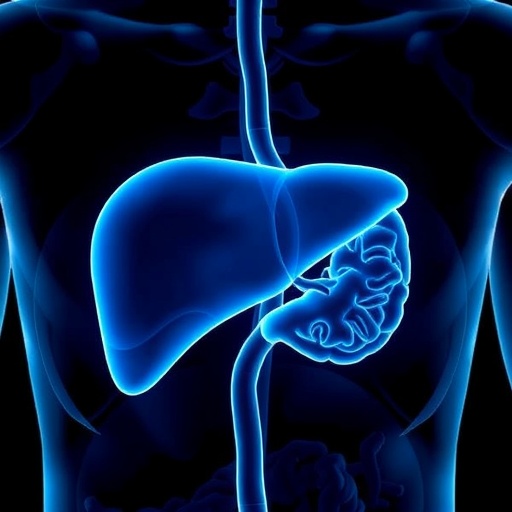Recent advancements in the field of diabetes management have led to promising innovations, particularly concerning the treatment of Type 2 diabetes patients suffering from non-alcoholic fatty liver disease (NAFLD). A pivotal study by Erfanifar et al. has shed new light on the effects of empagliflozin, a medication primarily known for its glucose-lowering properties, on liver health, specifically focusing on liver fibrosis and steatosis. This randomized clinical trial sought to explore the intricate relationship between diabetes, liver function, and the therapeutic potential of empagliflozin.
Within the expansive dialogue regarding diabetic care, NAFLD emerges as a significant complication linked with Type 2 diabetes. Characterized by excessive fat accumulation in the liver without alcohol consumption, NAFLD poses serious risks, including liver fibrosis, cirrhosis, and even hepatocellular carcinoma. The intersection of these two chronic conditions—Type 2 diabetes and NAFLD—necessitates a multifaceted treatment approach that addresses both blood glucose levels and liver health.
Empagliflozin, classified as a sodium-glucose co-transporter 2 (SGLT2) inhibitor, has been heralded for its dual benefits: it effectively reduces blood sugar levels while also conferring cardiovascular and renal protection. Recent findings indicate that its utility may extend beyond the traditional realm of glycemic control, leading researchers to investigate its influence on liver health. The trial conducted by Erfanifar and colleagues aimed to establish whether empagliflozin could mitigate the adverse hepatic effects associated with NAFLD.
Participants in the study were rigorously selected, ensuring only those with established diagnoses of Type 2 diabetes and NAFLD were included. This careful selection process was integral in isolating the effects of empagliflozin on liver functions without the confounding influence of other conditions. Over a defined treatment period, clinical assessments were conducted to evaluate changes in liver fibrosis, steatosis, and overall metabolic health.
Notably, the study’s methodology involved a control group that received a placebo, further strengthening the validity of the results. Randomized clinical trials are considered the gold standard in research, allowing for unbiased comparisons and robust findings. The placebo-controlled design offers invaluable insights into the true effects of empagliflozin, ensuring that any observed changes in liver histology and biochemical markers can be confidently attributed to the medication rather than other variables.
The results of this trial emerged as a beacon of hope. Initial data indicated that patients administered with empagliflozin demonstrated significant improvements in liver fibrosis markers compared to those receiving a placebo. This discovery prompts a more profound exploration of how glycemic control may influence hepatic fat storage and fibrogenesis. Liver fibrosis is a progressive condition, often signaling a transition towards more severe liver damage, highlighting the importance of findings that suggest a potential reversal of this process through appropriate pharmaceutical intervention.
Additionally, liver steatosis, characterized by the accumulation of fat within liver cells, also showed marked improvement in empagliflozin-treated patients. Such developments are crucial, as steatosis is often reversible, and managing its progression is paramount for preventing long-term complications. The ability of empagliflozin to target both fibrosis and steatosis positions it as a multifaceted therapeutic agent in the context of Type 2 diabetes management.
The implications of this research reach beyond individual patient outcomes; they potentially reshape clinical practice guidelines regarding the integrated treatment of Type 2 diabetes and NAFLD. Current standards of care may not sufficiently address the hepatic dimensions of diabetes management, and the findings from Erfanifar et al. advocate for a more comprehensive approach. Healthcare providers may soon consider medications like empagliflozin as essential components in the arsenal against not just hyperglycemia but also the associated liver complications prevalent in diabetic populations.
As the landscape of diabetes management evolves, the necessity for multidisciplinary strategies becomes increasingly evident. By intertwining endocrinology and hepatology, medical professionals could facilitate better long-term outcomes for Type 2 diabetes patients. Precision medicine, which tailors treatment options to the individual needs of patients, could synergistically benefit from the insights gleaned from this clinical trial.
Moreover, the trials underscore the critical need for ongoing research in understanding the liver’s response to various diabetes medications. Each new finding adds depth to existing knowledge and fosters a progressive dialogue about the roles different therapies play across various facets of metabolic health. With growing evidence supporting empagliflozin’s role in ameliorating liver conditions, future studies may expand upon this foundation to explore long-term outcomes and optimal treatment protocols.
In conclusion, the randomized clinical trial orchestrated by Erfanifar et al. offers valuable insights into the potential of empagliflozin as a therapeutic agent in managing liver fibrosis and steatosis among Type 2 diabetes patients. The emergence of such findings not only highlights the interconnected nature of diabetes and liver disease but also reinforces the importance of innovative therapeutic strategies that can comprehensively address the multifaceted challenges presented by these chronic conditions. This research stands as a significant contribution to the growing literature advocating for combined care approaches in diabetes management, paving the way for enhanced patient outcomes.
As we look toward the future of diabetes care, it is crucial that the medical community embraces these findings, integrating new knowledge into clinical practice while advocating for further research. The ongoing discourse surrounding the intersection of diabetes treatment and liver health has the potential to evolve significantly, fostering a more holistic view of patient care aimed at improving quality of life and health outcomes in those affected by these complex diseases.
Subject of Research: The impact of empagliflozin on liver fibrosis and steatosis in Type 2 diabetes patients with non-alcoholic fatty liver disease.
Article Title: Effect of empagliflozin on liver fibrosis and steatosis in patients with type 2 diabetes and non-alcoholic fatty liver disease: a randomized clinical trial.
Article References:
Erfanifar, A., Nikpour, S., Davoudi, Z. et al. Effect of empagliflozin on liver fibrosis and steatosis in patients with type 2 diabetes and non-alcoholic fatty liver disease: a randomized clinical trial.
BMC Endocr Disord 25, 277 (2025). https://doi.org/10.1186/s12902-025-02098-6
Image Credits: AI Generated
DOI: https://doi.org/10.1186/s12902-025-02098-6
Keywords: empagliflozin, liver fibrosis, steatosis, Type 2 diabetes, non-alcoholic fatty liver disease, clinical trial, metabolic health.




